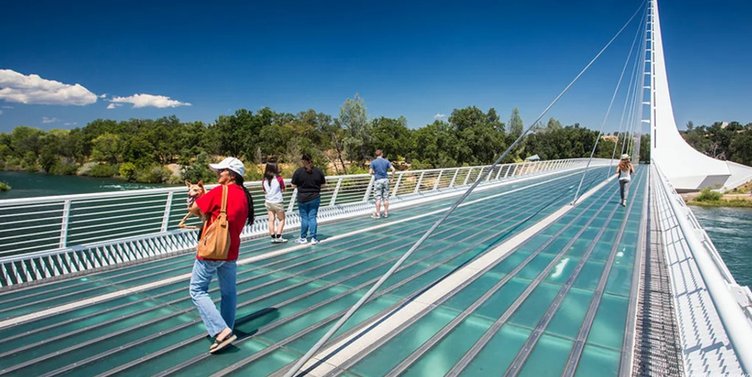When Tesla announced that Lathrop would be the site of a plant that manufactures parts for the company’s electric cars in Fremont back in 2014, nobody thought that it would be the beginning of a growing relationship between one of the world’s most closely-followed companies and the growing city.
But on Monday the company officially broke ground on a project that will repurpose what was previously a J.C. Penney distribution center for a manufacturing facility for an entirely new product – a massive, trailer-sized battery that will be used not for cars or homes, but to store excess power from the power grid and funnel that power back when it is needed most.
For Lathrop Mayor Sonny Dhaliwal, the announcement of the manufacturing facility for the Megapack – billed by the company as the largest, densest storage battery in the world – is another feather in the cap for the city.
“Lathrop is proud to be the home of the Megafactory, Tesla’s most recent expansion here,” Dhaliwal said. “The future of green energy will be produced right here in our community.
“This development means more opportunities for our residents, and a brighter future for our planet.”
While the company – known the world over for its electric vehicles – has been in the home power storage space for some time, the Megapack will be different because of the unique role that it will play in promoting a greener world by improving power efficiency.
The storage system aims to “transform the way that utilities manage the power grid” by providing “emissions-free” energy when providers need it most – eliminating the need for traditional fossil fuel power plants that are commonly used to supplement shortages.
While the delivery of electricity has become more efficient, the distribution of power across long distances often leads to overall loss – especially since traditional grids don’t have any place for excess power that isn’t needed to be stored. The Megapack solves this problem by allowing energy providers with the chance to store that excess power and send it back into the grid as it is needed – something that the company already does with its home-focused battery system that allows for excess power generated by solar panels to be stored and saved.
The facility in Lathrop will assemble and distribute the Megapack units around to locations around the world – including those that are utilized here in California – and will include over-the-air updates to the operating software for the units to maximize efficiency and continuously improve performance.
The announcement in 2014 that Tesla would take over the shuttered Mopar distribution facility along I-5 made headlines around the country as the Silicon Valley company expanded its footprint beyond Fremont where it assembles most of its electric cars.
But that was just the beginning for the growing South County city and one of the world’s most recognizable brands.
Tesla has since expanded its initial building’s footprint, and added other space including an 870,000 square foot distribution center behind the old Pilkington glass plant on Louise Avenue. A company that manufactures parts that are used in Tesla vehicles also opened a facility in Lathrop near the original Tesla building to help provide parts that are used in the manufacturing process.
And for a time, Lathrop also housed thousands of Tesla vehicles that had been assembled in Fremont and were awaiting shipment to their final destination – renting space at the old Pilkington facility to temporarily stage the vehicles that were dropped off and hauled away by trailer.
According to Bloomberg News, the news that Tesla was expanding its operations in California was a welcome sign for the state after the company’s CEO, Elon Musk, slammed the state’s shutdown efforts early during the COVID-19 pandemic and subsequently moved to Texas – which is now where the company plans to assemble the Model Y and Cybertruck vehicles. The move to build the Megapack in Lathrop, Bloomberg said, was seen as a sign that California remains a part of the company’s future.
To contact reporter Jason Campbell email jcampbell@mantecabulletin.com or call 209.249.3544.









